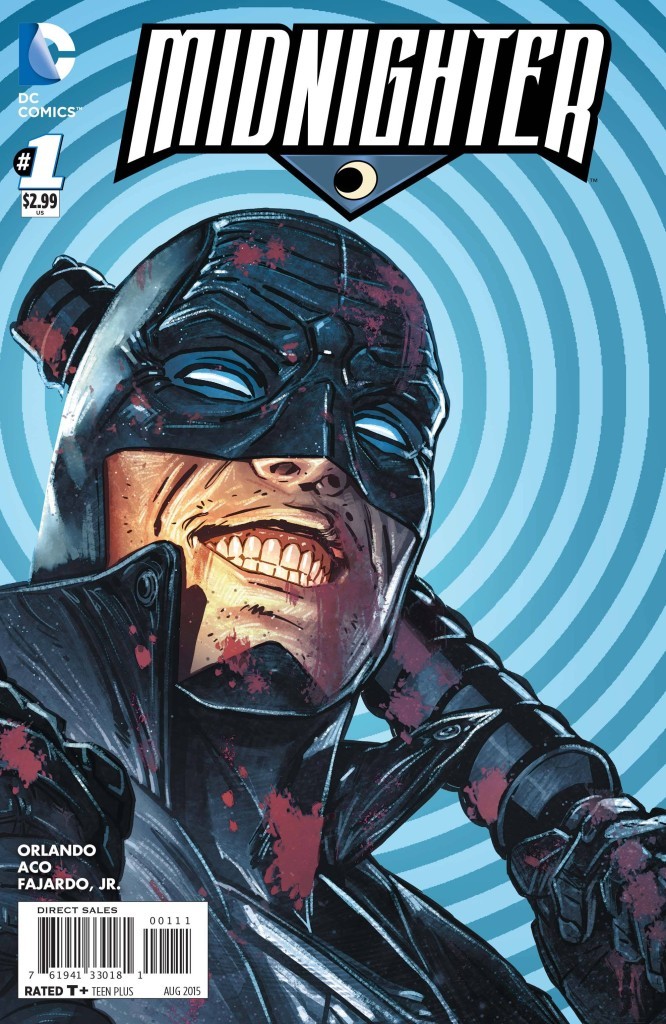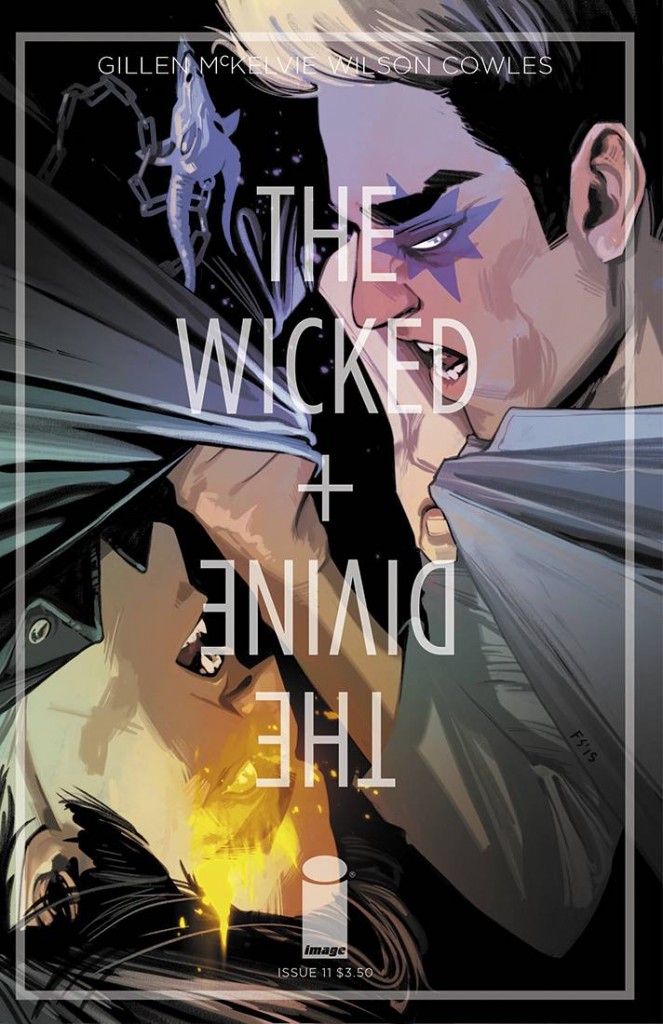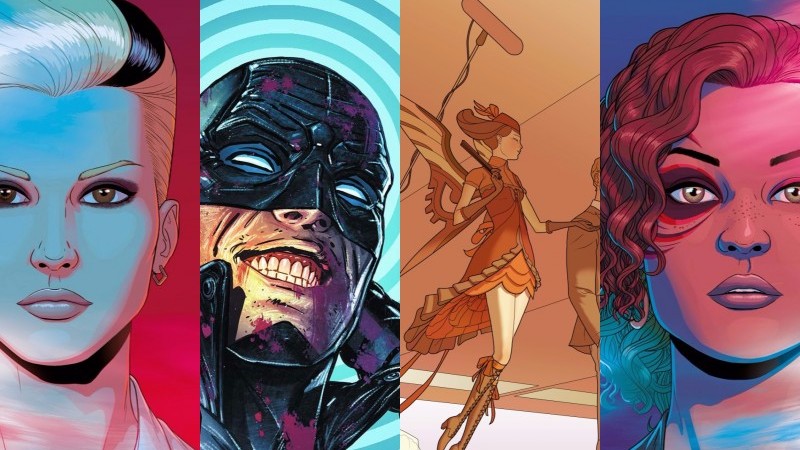By Molly Jane Kremer, Scott Southard, and Jarrod Jones. Our Week In Review serves to fill in the gaps our frequently verbose comic book coverage leaves behind. Each week, we take a brief look into the books that demand attention.
 Midnighter #1
Midnighter #1
Written by Steve Orlando.
Art by ACO and Hugo Petrus.
Colors by Romulo Fajardo, Jr.
JJ: As far as DC premieres go, Grayson #1 was a tough act to follow. The sheer pop effervescence that came with Dick Grayson’s post-Forever Evil outing was an instant critical success, one that demanded the inevitability of a spin-off. The world Tim Seeley, Tom King, and Mikel Janin created was just too damned cool to not explore further.
That’s the strange thing about Midnighter; it’s both a spin-off and it isn’t. The book’s main character has hidden in the shadows of the DCU since he and his Wildstorm brethren were ushered into the New 52 in Stormwatch (and later, all by his lonesome in Grayson), but if there was one character from that universe that merited his own marquee comic, it sure as hell wasn’t Grifter. Midnighter may have cut his DC teeth in the pages of Stormwatch, but let’s face facts: Grayson was where the character truly shined, even when he was playing second fiddle to Dick Grayson’s ass personality. If Midnighter is going to count in this new DC Comics paradigm, someone has to bring him back to his foul-mouthed halcyon days of Ellis, Millar, and Ennis, while making the dude seem like a functioning character that matters within the DCU.
And you know what? Steve Orlando and ACO not only did both of those things, they made it look easy, and they probably even handed in their work to their editor on time for added measure.
As far as narrative inevitability is concerned, seeing Midnighter finally get his own boisterous, unabashedly hilarious, and terribly exciting book in the DC Universe feels like a well-earned accomplishment. Seeing the book rolled out in such style — bolstered by writer Steve Orlando’s assured confidence and artist ACO’s furiously kinetic energy — feels like a well-deserved compliment. Welcome to DC Comics’ top bracket, Midnighter. I really hope you survive the experience.
8.5 out of 10
 Nonplayer #2
Nonplayer #2
Image Comics/$2.99
Written and illustrated by Nate Simpson.
SS: It takes an enormous amount of dedication and vision to see a cohesive story come together clearly when the entirety of the work rests on the shoulders of a single individual. It’s kind of amazing that anything created and produced by one person ever comes out at all.
Nate Simpson’s Nonplayer almost didn’t make it. He debuted (rather exploded) on the comic scene in 2011 with the very ambitious enterprise, and immediately garnered accolades and respect. He won a newcomer Eisner award based solely on issue #1, and the fact that it was done in his free time as a pet project makes the work all that more astounding. Four years later, after much real-life interference, Simpson has finally finished #2 and let it loose upon the public, and it meets the tone and tempo of it’s predecessor with vigor and pomp.
Nonplayer #2 continues the story of protagonist, Dana Stevens, in a kind-of-not-too-distant-future where the progress of technology has sent video games and artificial intelligence colliding to create an all-encompassing virtual reality entertainment called Warriors of Jarvath. It’s kind of a persistent fantasy video game that Dana plays in her free time, but the virtual world, and creation and maintenance of it, shine a light on the future of our current technology’s embryonic stages. Singularity-edging questions (Does a National Artificial Intelligence Bureau defend AI civil liberties? Is the Turing Test a true test of intellectual awareness?) prod at the smaller, more mundane potentials of impending artificial intelligence and what justifies true consciousness.
Big questions, big concepts. Not that this is particularly new ground for comics, but Simpson has executed it with a precision you rarely see from traditional creative teams. The artwork here is clearly not an afterthought. With sharp, tight models and heavily detailed backgrounds (beautiful splash panels of city skylines) and thoughtful ornamentation (a fish market has a sign written in four languages to emphasize the ethnically heterogenous nature of future urban life), an entire world (plus a world within that world) conceivably exists. It’s the kind of place you can easily believe functions on its own.
This kind of fully executed world is further highlighted by a storytelling style that borrows from postmodern literary techniques. Simpson’s narrative messes with perspective, shifting from “real world” to “in-game” from panel to panel, leaving a lot of what we’re seeing in an ambiguity that we’re free to interpret and hypothosize over. It’s postmodernist with a purpose, which is too rarely seen even in the standard literature where we expect it. Nonplayer #2 throws us into so many vantage points, and while it can become moderately confusing at times, the technique accentuates how many forces are at play and how interweaving life can be.
I trust that as the book progresses (Simpson’s goal is to write one issue per year until 2020. Tragedy, I know), much of the shifting perspectives will illuminate the unfolding story more and more, and ultimately paint an increasingly interesting picture of a world we’ll see one way or another as technological consumer evolution continues. I’m enraptured within the finely curated Nonplayer world, and I’m okay to wait for however many years it takes for it to end.
9 out of 10
 The Wicked + The Divine #11
The Wicked + The Divine #11
Image Comics/$3.99
Written by Kieron Gillen.
Art by Jamie McKelvie; colors by Matthew Wilson.
MJ: The Wicked + The Divine knows how to end a story with a bang. The last time an arc was winding down, in issue #5, we got a violent and graphic end for one of the series’ major and most-beloved players – with serious ramifications for the entire series. Now, at the end of what will be the second collection (here be spoilers, everyone, turn back now lest ye see), our point-of-view character – the endearing and idealistic Laura – is granted her fondest wish of becoming a god of the pantheon just before suffering a grisly death at the hands of Ananke. This was an emotional gut-punch of an issue (and I think I’ve gone through all five stages of grief since reading it).
We’ve followed young Laura (and her familiar, teenaged obsessive-fandom) almost exclusively for this entire series, and seeing her finally achieve godhood a mere four pages before her untimely death is nothing less than heartbreaking. Her wide-eyed naïveté was our lens into this world, and it was shocking to see her killed her off so soon, and so cruelly. Which would simply be casual brutality if Kieron Gillen, Jamie McKelvie and Matthew Wilson didn’t also make it this affecting.
McKelvie gives Laura/Persephone expressions filled with incredible elation and joy (in her very short time as the goddess), and her new costume is yet another goth-glam, eminently-cosplayable McKelvie-designed masterwork. McKelvie continues to excel at meticulously rendered faces, full of passion and emotion: the tears shown in Persephone’s eyes as she’s about to sing for the first time, surrounded by a golden glow, is moving and beautiful.
Inanna and Baphomet’s fight is also visually stunning. Wilson’s colors glitter and shimmer, belying the dread gravity imbued within the battle (and within the whole issue). The clash’s explosive end is ambiguous (Did Inanna survive? Did Baphomet? Did all those orgiastic fans find their clothes?) and leaves yet more questions on top of those related to Laura’s death.
Ananke has always been depicted as the Pantheon’s equivalent of adult supervision, and as in his Young Avengers run, Gillen has now seemingly made authority into enemy (something very easily relatable to the idea of rock and roll – and all those venerated superlatives it once inspired in baby-boomers). Since Ananke’s actions in this issue implicate her immensely in the events surrounding Lucifer’s death, it will be extremely interesting to see where the story goes from here, what other characters’ reactions will be (if they find out), and whether or not that rebellious ideal will be further explored.
We’ll certainly have a while to stew over all these bombshells – the next few issues feature guest artists on single issues about solo Pantheon members – and over Laura’s death. And far be it from me to turn this review into a speculation-fest (or maybe I just haven’t gotten past Denial in those grief stages yet?) but the goddess Laura became was Persephone, a goddess of death – and of rebirth – and had dialogue after Ananke did the deed… so I’m holding out hope this isn’t the last we’ve seen of our girl.
The twists and turns of most memorable fiction have always consisted of deaths great and small, as has the modern music world. With a story as steeped in ancient mythology (and in the modern mythology of pop music) as Wicked + Divine is, it’s hard to stay surprised when the creators pull all the dramatic stops like this – upsetting as they may be. It makes for a richer story, all-told, and for an extraordinarily compelling comic. (Well, once we get past that Acceptance stage, at least.) Here’s to Laura.
9 out of 10
Do you agree with our assessments? Let us know in the comments section below.













